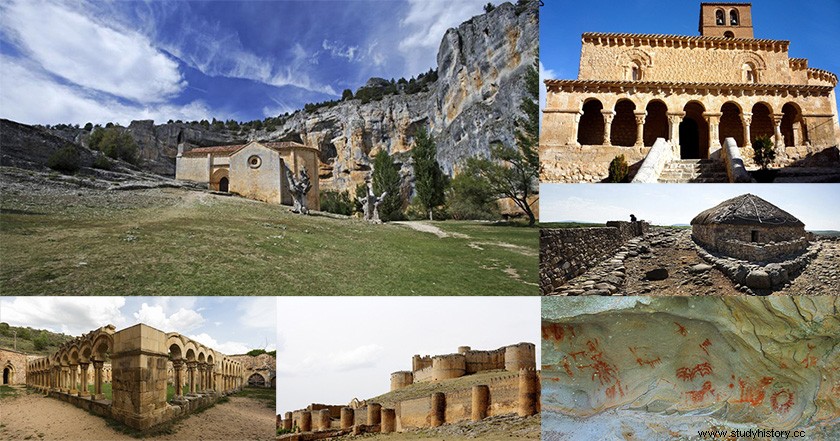
We neither can nor want to deny it, in Walking Through history we have a special predilection for the Spanish province of Soria, a true paradise for those of us who love history. As the title says, its more than 10,000 km2 have witnessed some of the most remarkable events in our history, which have left an outstanding historical heritage in the province. Through these lines, with a short tour of the most outstanding details of its historical evolution, we want to encourage you to discover it with your own eyes, going to Soria will undoubtedly leave you with a great taste in your mouth.
Prehistory.
To find the first signs of life in the plains of Soria we can turn to the hackneyed phrase "since time immemorial". We can deduce this aspect from the discovery in the south of the province, near Medinaceli, of the Ambrona and Torralba deposits, in which the largest sample of animal fossils in the entire Peninsula has been located. Today the area is considered an elephant cemetery, which was used by Homo heidelbergensis for food. This aspect has brought these sites to the first order of preference for studies of the Lower Palaeolithic, the discussions have revolved around the skills of these ancestors, as hunters or scavengers. We can recommend a visit to the Torralba site where we will find a small interpretive museum.
To bring us closer to the next destination, apart from a great leap in time, we must travel north, where we will find Mount Valonsadero near the capital of Soria. At least 35 shelters were located there in the 20th century, with samples of prehistoric schematic art. This art was made by farmers and ranchers of the Metal Age (3,000-2,000 BC), so we can deduce that it was an important place of passage for these semi-nomadic communities. The space can be visited on a pleasant excursion through this place of singular beauty.

recreation of the extinct Palaeoloxodon antiquus near Ambrona (Soria)
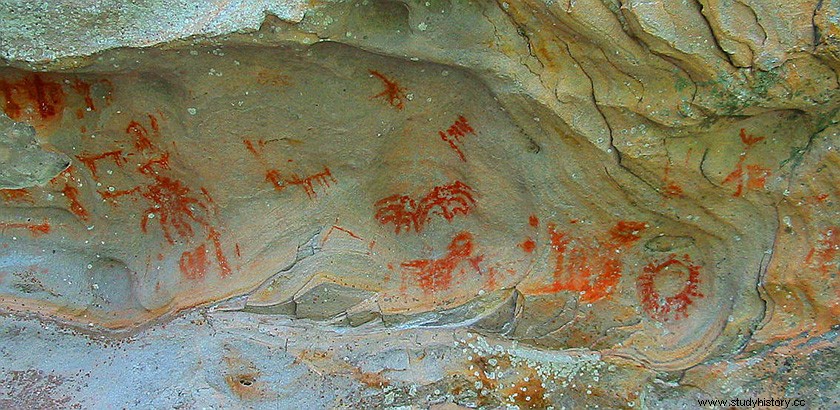
Paintings from Valonsadero (Soria)
Celtiberian Stage.
With the permission of the others, we enter the most unique period in the history of the lands of Soria. At least one of the best known, given the importance that in the protohistory of this country has been given to the period of the Roman conquest of the Peninsula, where the Celtiberians became, on their own merits, the most seasoned defenders of it. Thanks to the so-called Celtiberian Wars (181-133 BC), the Roman chroniclers introduced us to this first town in the province of Soria, the Arévacos.
Of all the remains that archeology has discovered in the aforementioned period, we can highlight three mainly. Although two of them, Uxama and Tiermes, which we will talk about later, are better known for the subsequent Roman occupation that hardly left traces of the Celtiberian era. Therefore, the most recommended visit to meet the Arévacos is Numancia, the city besieged by the Romans for endless years, and which is located in Garray, just 7 km north of the capital of Soria. The visit to the site is guided, and two Celtiberian houses have also been museumized.
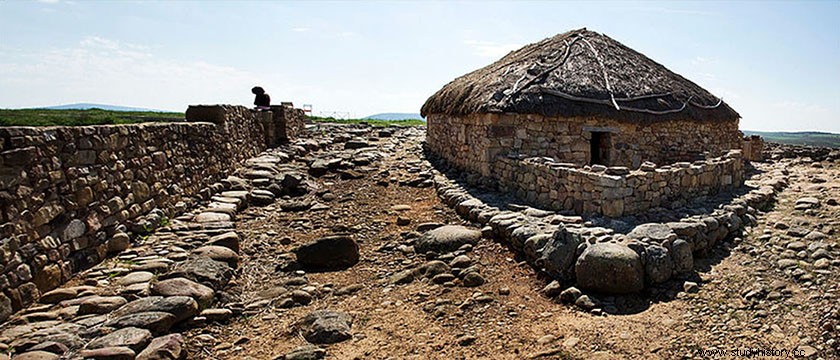
Numancia (Soria)
Roman times.
Since the capture of Numancia in the year 133 a. C. the province begins its romanization process. Precisely from this period we can visit in the town of Muro, near Agreda, an interpretive museum called Augustóbriga, its name will come in relation to the main function of this space in times of the Roman Empire, where it served as a resting point between the big cities Romans of Asturica Augusta (Astorga) and Caesaraugusta (Zaragoza).
If we have to choose a specific Roman site, due to its uniqueness we should choose Tiermes, the Arevaca city that finally surrendered to Rome in 98 BC. C. During the nearly four centuries that it was under the designs of the Roman province of Tarraconensis, the city excavated in stone became a large city of more than 3,000 inhabitants. Today it is outdoors and its visit is free, despite which the guided tour is advisable.
Another of the important periods of the province was the Low Empire, during this period the plains of Soria were covered with traditional rural Roman villas, where the great low-imperial potentates exercised almost independent of the imperial structures, and that were the germ of medieval feudalism centuries later. Two are the most outstanding examples that we can find today of this period:On the one hand, the Villa de la Dehesa, about 30 km from the capital, said villa belonging to the ancient family of Celtiberian tradition of the Irrico, can be visited in all its extension of 4,000 m2, thanks to a great museum. From the same period was the Roman Villa of Quintanares, with some of the most outstanding mosaics found in Spain, and today accommodated in the Numantino museum in the capital of Soria.
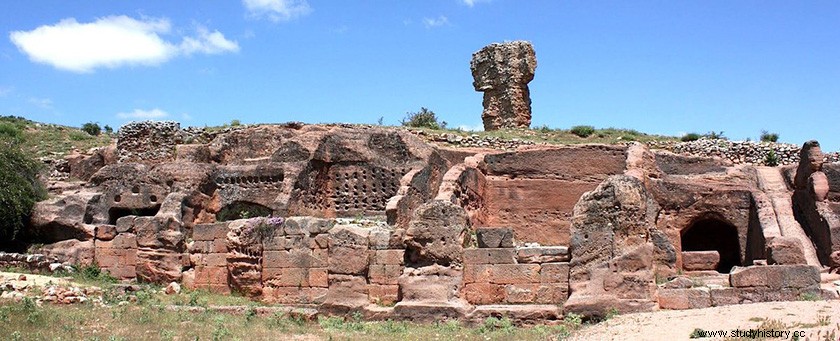
Tiermes
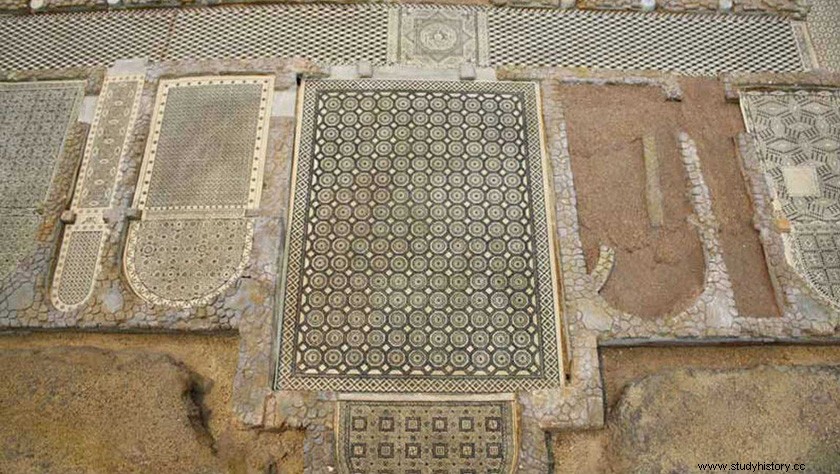
Village of the Meadow
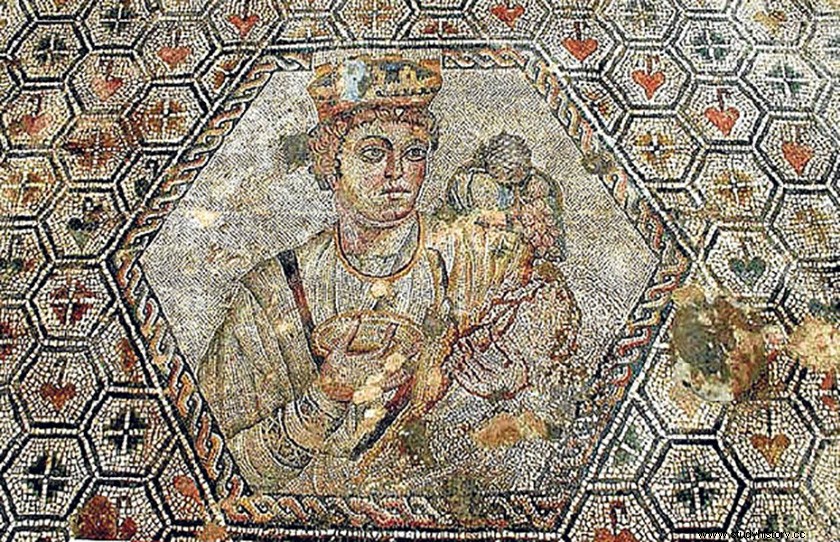
Mosaic of abundance in Quintanares
Under Muslim rule.
After the fall of the Roman Empire, and the few vestiges left by the Visigoths in the province of Soria, we come to the Muslim conquest of the province, which occurred like the rest of the Peninsula , with the exception of the Astur kingdom, during the second decade of the 8th century.
But it will be especially in the 10th century, and the beginning of the 11th, when the province of Soria becomes the battlefield for Muslims and Christians. At the beginning of that century, the Christian expansion had reached the natural border offered by the Duero river, this fact led the powerful Caliphate of Córdoba to initiate a series of movements aimed at curbing the expansion of the Christian kingdoms. From this period are the largest Muslim fortress built in Europe, the Gormaz fortress. On the other hand, in the times of the caudillo Almanzor, the capital of the Muslim Middle March was moved from Toledo to Medinaceli, a city that very likely saw the death of such an outstanding character. The remains of a citadel and the wall of this city are two of the remains that can be visited.
A very special construction in the province of Soria are the Muslim watchtowers erected during this period, which became the best surveillance points of the Soria plain. These round constructions over 10 m high have been found scattered throughout the province, highlighting the Atalaya de Veruela in the municipality of Caltojar, as one of the best preserved.
We cannot say goodbye to this point without discovering ourselves before one of the jewels of the Mozarabic architecture of the Peninsula. It is necessary to remember that the Mozarabs were Christians who lived within Muslim territory, preserving their religion, and who erected the hermitage of San Baudelio in a remote corner of Soria's geography.
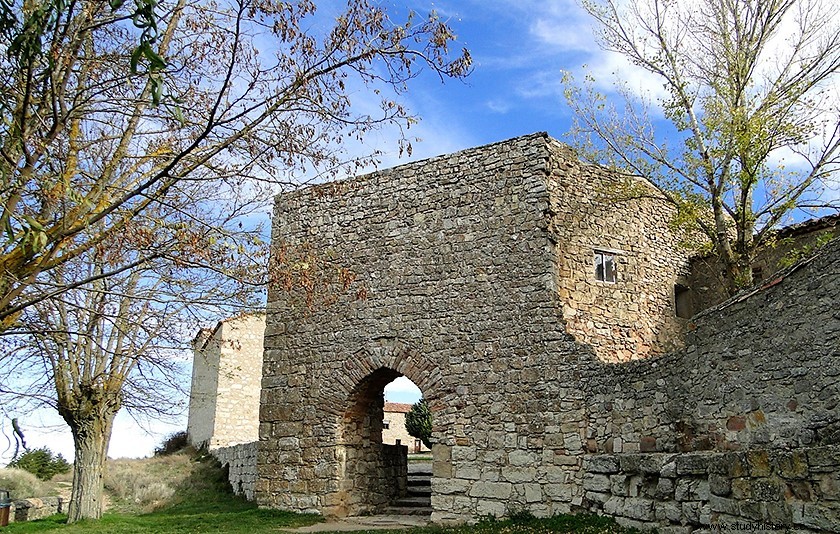
Arab wall of Medinaceli
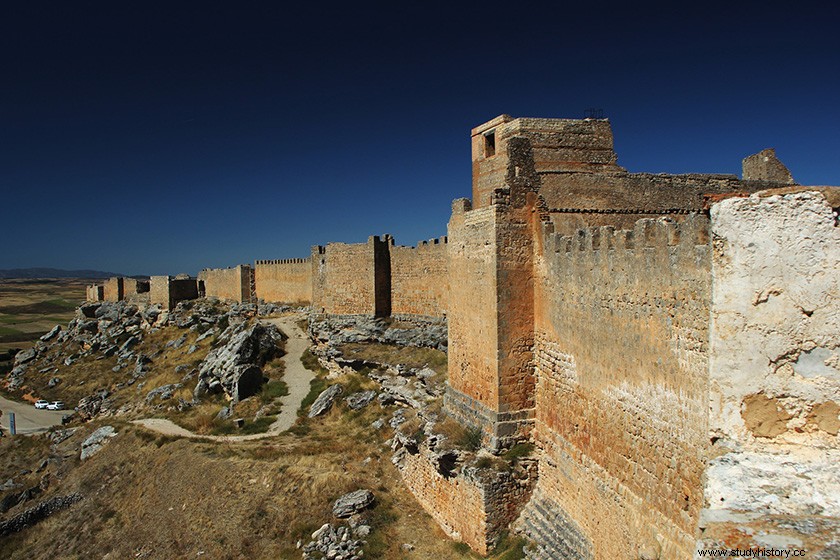
Gormaz Fortress
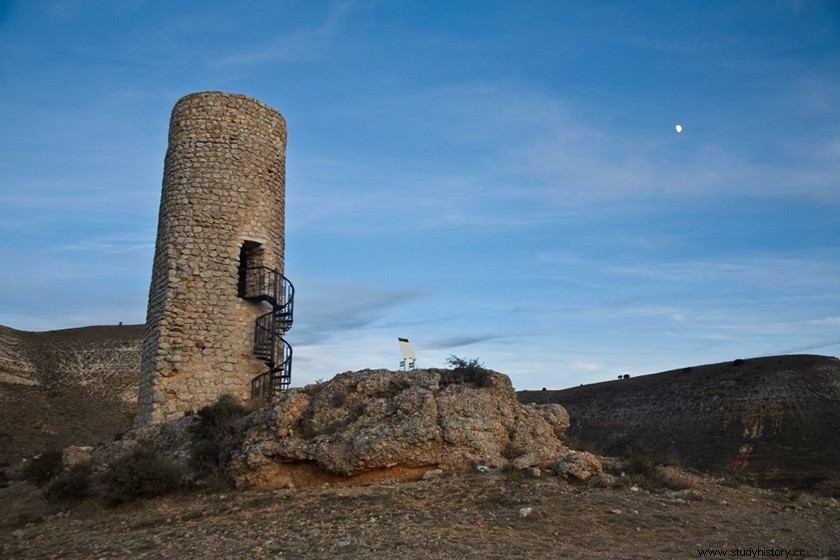
Veruela Watchtower
Christian repopulation in the Middle Ages.
After the death of Almanzor and especially in the 12th century, the great Christian repopulation of the territories of the province of Soria began. Of this period we are sure that we left behind great constructions, the constructive work had its peak during the 12th-14th centuries. Without going any further, the capital Soria will enter fully into history, in the times of Alfonso I the battler, approximately in the year 1111.
We are in the era where Christians will make Muslim castles their own and build their own. Unfortunately, most of them lack museum spaces and their state of deterioration is considerable. The examples are numerous; Ucero, Catalañazor, Yanguas, Caracena, or Magaña. Two places worth visiting should be highlighted, because they were rebuilt at the end of the Middle Ages and both have guided tours; the Castle of Berlanga de Duero and the Castle of Almenar.
Also note that from the hand of the Christian repopulation came the Romanesque. More than 300 constructions have been counted in the province of Soria with this first unitary artistic and constructive system of the Middle Ages. A good place to start the visit would be the capital, where we will find the cloister of San Juan de Duero or the Church of Santo Domingo. To which we could add three highly recommended visits; to begin the Cistercian monastery of Santa María de la Huerta, then the Church of San Miguel in San Esteban de Gormaz, considered one of the forerunners of Romanesque in Castile. Finally and taking advantage of the visit to the Celtiberian-Roman archaeological site of Tiermes, we will find the hermitage of Santa María, built with the stones of the Roman city itself.
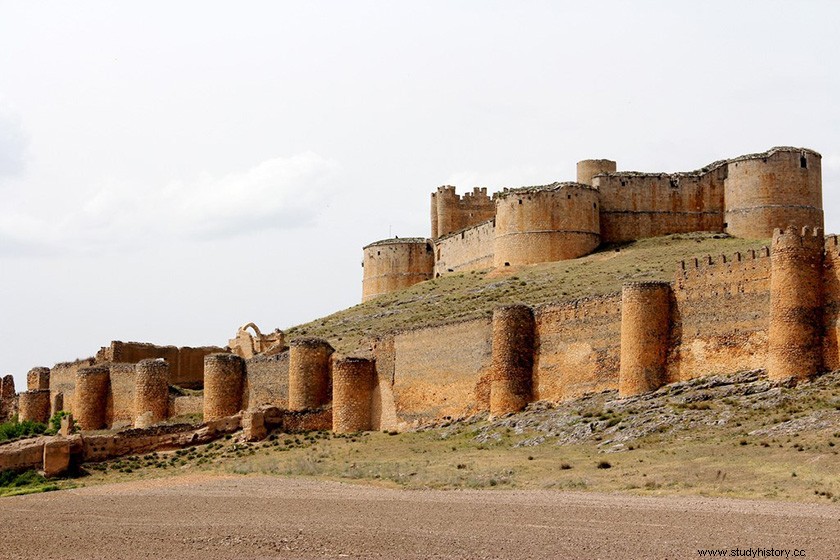
Berlanga de Duero Castle
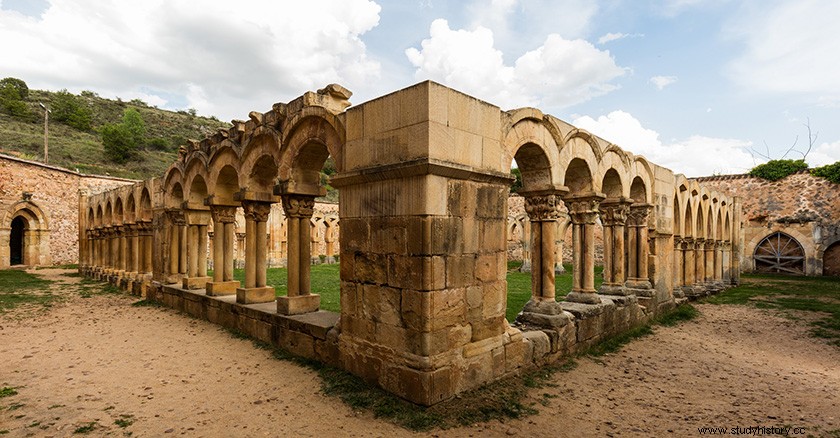
Cloister of San Juan de Duero
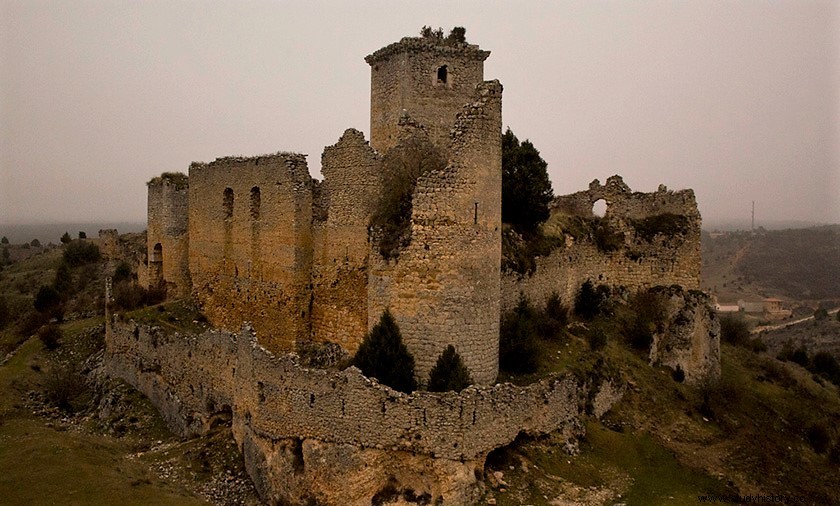
Castle of Ucero
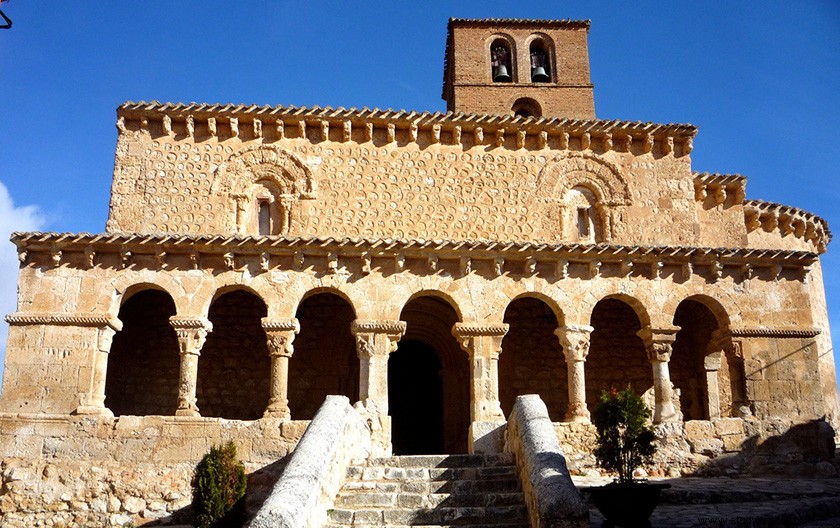
Church of San Miguel in San Esteban de Gormaz
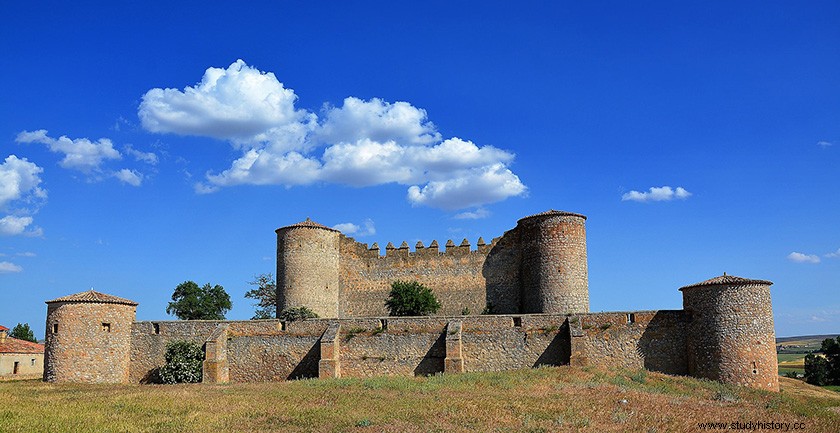
Castle of Almenar
The Renaissance and the Baroque in Soria.
In 1492 with the conquest of America, or the expulsion of the Jews by the Catholic Monarchs, an economic and demographic decline began in the province of Soria from which it has not recovered. Today, together with the province of Teruel, they are the most depopulated in Spain and Europe.
Despite this, we can highlight some must-see towns from this period. The first of them, El Burgo de Osma, located next to the Celtiberian city of Uxama, where this population was born, which will acquire its period of greatest splendor, thanks to the dominance exercised by the Christian church precisely in the Modern Age. From this period are the University of Santa Catalina (16th century), the seminary of Santo Domingo de Guzmán or the Old Hospital of San Agustín (17th century).
It is necessary to remember that, with the Modern Age, the granting of noble titles by the kings to prominent figures of the nobility proliferated. In the province of Soria we also find some examples, such as the Duchy of Medinaceli, granted by Queen Isabella of Castile to Luis de la Cerda y de la Vega, thanks to which his descendants will build the Ducal Palace of Medinaceli. 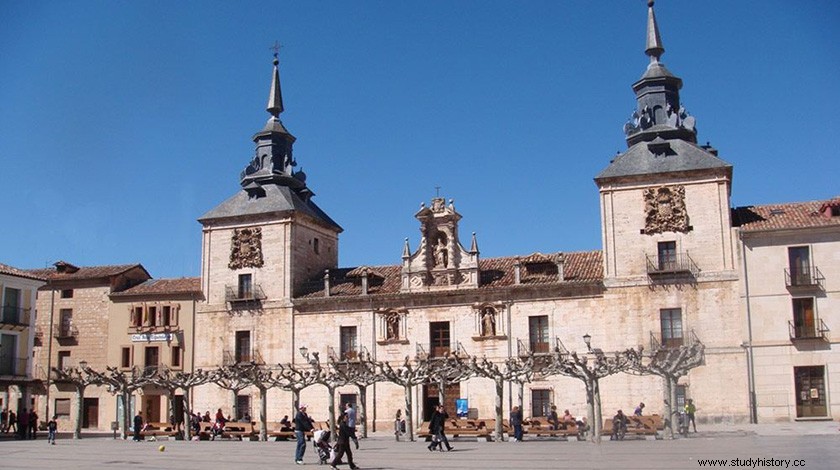
San Agustin Hospital, Osma
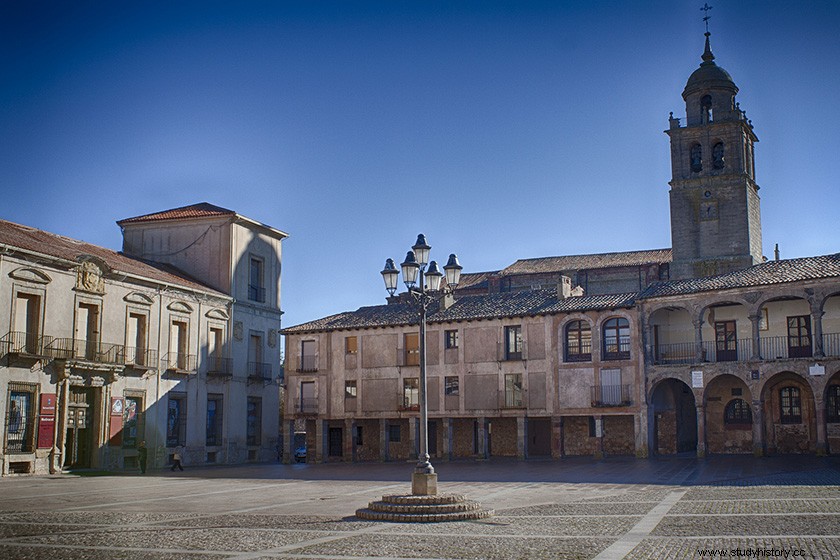
Ducal Palace of Medinaceli
The province of Soria today.
As has been pointed out, the province of Soria is one of the least inhabited in Spain and in Europe. But obviously this aspect has its positive repercussions, since it has become a true natural refuge, the Duero River, the peaks of Urbión, the Lobos River Canyon, or the Laguna Negra, among others, are must-sees. But in addition, the Diputación de Soria or the Junta de Castilla y León have spent years trying to promote cultural tourism in this fantastic province, in good faith, in part they have achieved it with some good examples, I do not want to forget the Numantino Museum in Soria, but what do not relax, there is much to do. As far as I personally owed this article to Soria, it is without a doubt one of my favorite places. It ended as I started, go to Soria, you won't regret it.

Lobos River Canyon

Numantine Museum
Recommended links:
sorianitelaimaginas
turismosoria
adviceguide
Images:
commons.wikimedia
flickr
I think that I have no choice but to invite you to get to know the province of Soria a little better, in the four articles that we have dedicated to it in Walking Through History:
